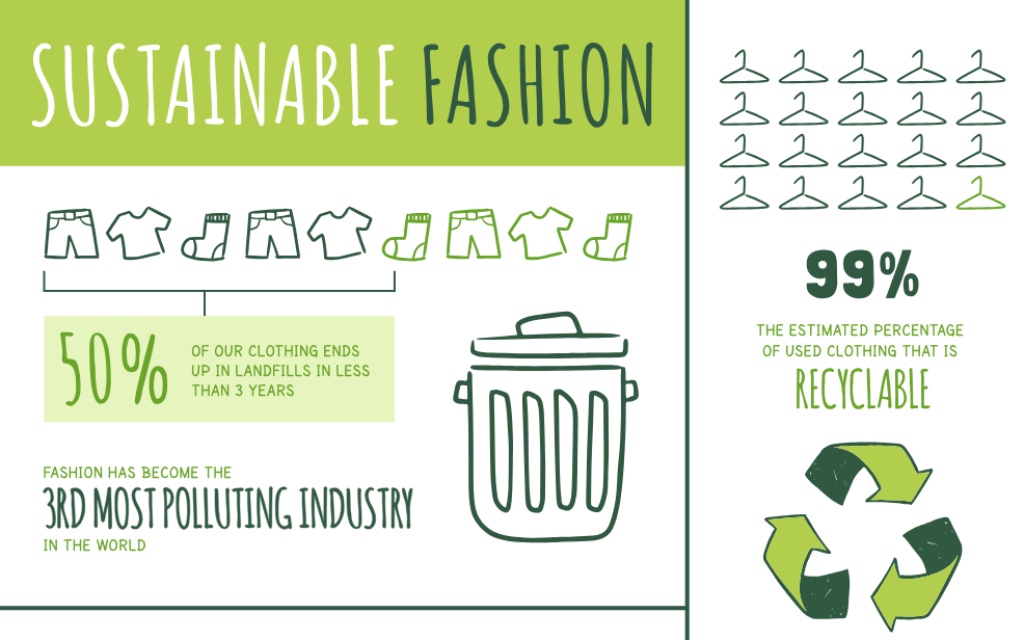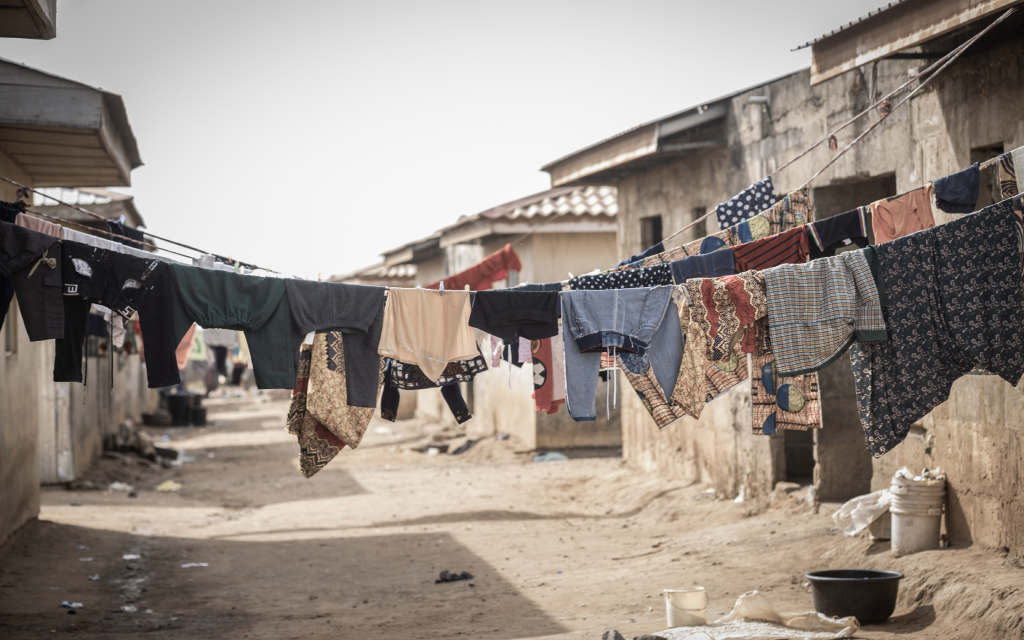Couture Climate Catastrophe: The Environmental Impacts Of The Fashion Industry
Dressing With Destructive Disregard
I admit that in my younger days, I just had to wear what was in vogue, governed by being socially conditioned. This occurred most during my teens and twenties. If it wasn’t one of the ‘big’ brands or ‘labels’, then you and your family were rendered impoverished or perhaps stuck in another era.
“New season here”, “buy this now”, “throw that out with holes”, and “move on to the next”. Yes, I, too, had slavishly become a victim of fashion.
Having said that, with two elder brothers, I was made to wear my fair share of ‘hand-me-downs’ when my age was in single figures. So in retrospect, my late parents were simply en pointe.
Even to this day, I haven’t purchased a single piece of virgin clothing for the past three years. Charity shops are now my ‘go-to’ place and yes, many people wouldn’t be seen dead in one.
However, because of the rising cost of living, it seems browsing carefully through the clothes rails at these places for bespoke or vintage garments seems more popular than ever.
(You can read more on my blog on the rising cost of living here).
Anecdotally, it seems some second-hand shops seemed to have cottoned on (pardon the pun) through increasing consumer demands and a change in their spending habits. Many of them have changed their business models and hiked up their prices.
Still, I remain optimistic as all funds raised are hopefully destined for the more disadvantaged.
So, How Is The Fashion Industry Crippling Our Planet?
The fashion industry, often hailed as a beacon of creativity and self-expression, harbours a darker, less glamorous side: its substantial contribution to the escalating climate crisis.
The United Nations Environment Programme (UNEP) revealed that the fashion sector contributes to nearly 10% of global greenhouse gas emissions. The industry also uses more energy than the aviation and shipping industries combined.
According to Climate Trade, it is currently the 3rd most polluting industry after the fossil fuel and agriculture sectors.

Water Wastage: The Unseen Underbelly Of Fashion
One of the most pressing issues is the colossal consumption of water. Cotton, one of the most widely used materials in the apparel industry, is a notoriously water-hungry crop. It takes about 2,700 litres of water to produce a single cotton t-shirt, according to The Water Footprint Network. This is what an average person drinks over three years.
Then let’s take a pair of denim jeans, which most people own. According to UNEP, it takes 3,781 litres of water to make one pair, from the production of the cotton to the delivery of the final product to the store. That equates to the emission of around 33.4 kilograms of carbon equivalent.
The World Bank estimates that textile dyeing and treatment contribute up to 20% of industrial water pollution globally. Moreover, approximately 500,000 tonnes of microfibres, equivalent to 50 billion plastic bottles, leak into the ocean each year. The effluent from your washed clothes ends up as microplastics in lakes, rivers and oceans.
(Read more about microplastics in my separate publication here).
Carbon Catastrophe: The Fashion Industry’s Fateful Footprint
The manufacturing process in the fashion industry also leaves a hefty carbon footprint. The McKinsey report predicts that the fashion industry’s CO2 emissions will surge by over 60% by 2030.
60% of the clothing we buy is manufactured from plastics like polyester. This material is derived from a non-renewable fossil fuel. In Australia, we throw out, on average, 10kg of clothes per year. According to The Australian Fashion Council, this equates to 227,000 tonnes of clothing ending up in landfill sites, with only 7,000 tonnes being recycled.
So indirectly, we are dumping an astonishing 18,000 litres of oil into landfill every hour.
This surge is driven by fast fashion companies such as Shein, which is based in China. Shein is based on a business model that emphasises rapid production cycles, low prices and disposable clothing. This leads to increased production and, therefore, higher greenhouse gas emissions.

Landfills: The Clothing Cataclysm
The fast fashion model not only contributes to emissions but also generates monumental waste. According to the Ellen MacArthur Foundation, one garbage truck of textiles is wasted every second and less than 1% of clothing is recycled into new clothes.
This waste often ends up in landfills, releasing harmful greenhouse gases like methane (CH4) as it decomposes.
It also leaches other harmful chemicals into the environment, such as per- and polyfluoroalkyl substances (PFAS), which are synthetic chemicals that resist heat, oil, stains, grease and water. PFAS contaminates water sources and food supplies and, therefore, is a major source which exposes these compounds to humans.
Though their effects on human health are still evolving, it has been suggested they have a role in the development of certain cancers. PFAS also damages the immune system, decreases fertility and, in children, causes low birth weight and developmental delay.
Addressing Attire’s Adverse Impact
The fashion industry’s impact on the climate crisis is severe, but it’s not an inescapable fate. Organisations and consumers alike can play a part in mitigating this impact. Transparent supply chains, eco-friendly materials and a shift towards slow fashion are some solutions that can help revolutionise the industry.
Addressing the fashion industry’s role in the climate crisis is not merely a trend; it’s an urgent necessity. As the severity of climate change becomes impossible to ignore, the role of our wardrobe in this global issue should no longer be hidden in the closet.
So, I ask the reader, are you still a victim of fashion, like I was yesteryear through vogue and vanity?
Or will you and future generations eventually become a slave to the environmental impact left on others simply owing to the clothes and weight carried on your shoulders?
The solutions are fairly simple: move away from fast fashion and purchase fewer but better-quality pieces of clothing. I recently attended a clothes-swapping get-together and donated what I hadn’t worn in years to my local charity shop.
Perhaps you can opt for sustainable brands that disclose their environmental impact transparently and act to reduce it as part of a more circular economy instead of the linear ‘take-make-waste’ model.
It always goes back to the five Rs: Reduce, Reuse, Refurbish, Repair and Recycle.
Your thoughts and comments are welcome.
To read about some startling statistics regarding the ‘War On Waste’ in Australia please click here. There is even a mini-quiz at the end for those inclined who want to test their knowledge.
(Courtesy of The ABC, Australia)

About Surrinder Singh

Dr Surrinder Singh is a medical doctor, blogger and freelance writer. He is passionate about healthcare, medicine and education and works professionally with B2B and B2C clients.
Couture Climate Catastrophe: The Environmental Impacts Of The Fashion Industry Read More »


Leave a Comment